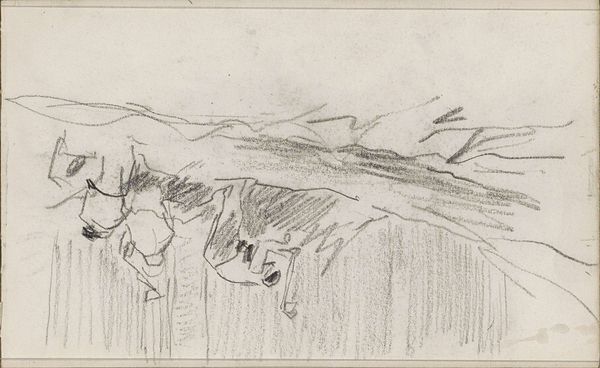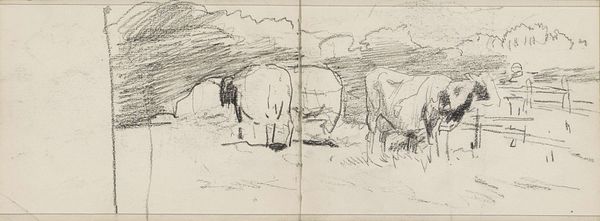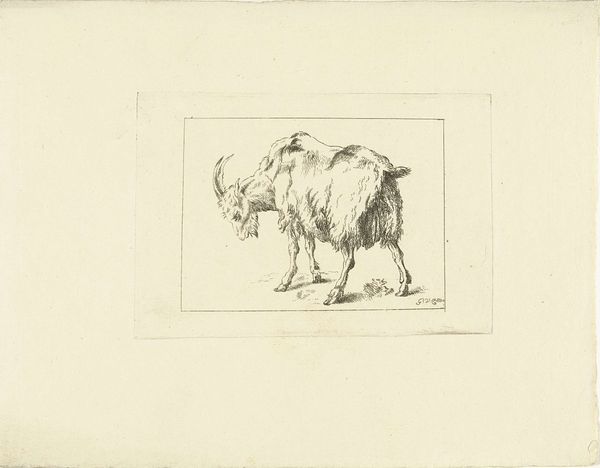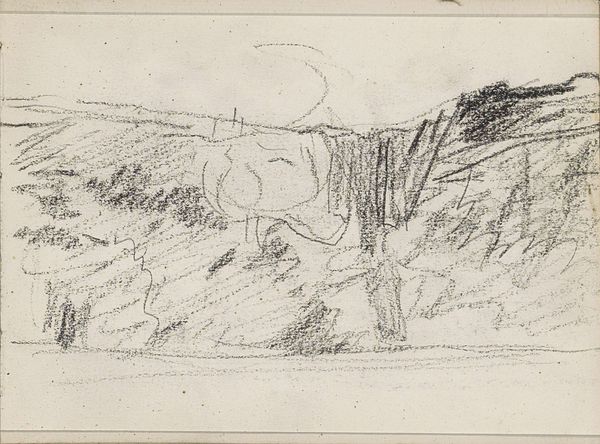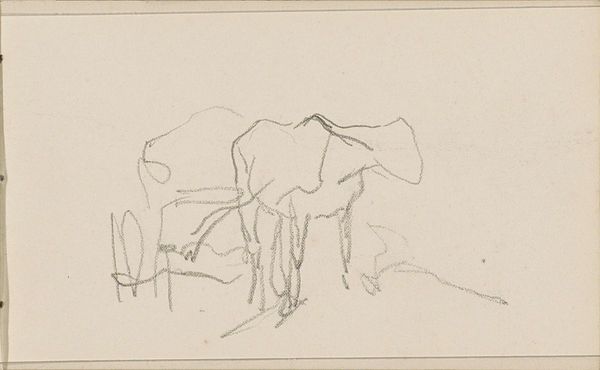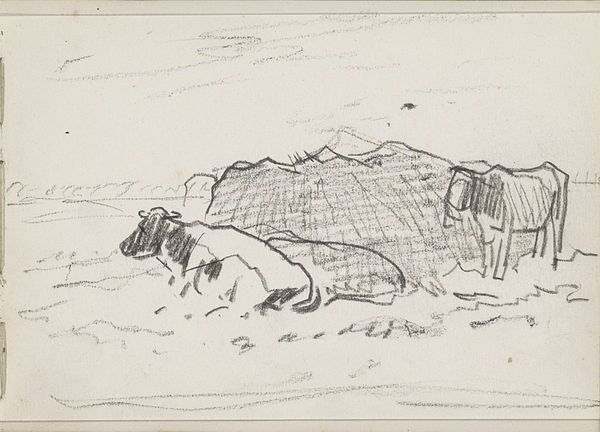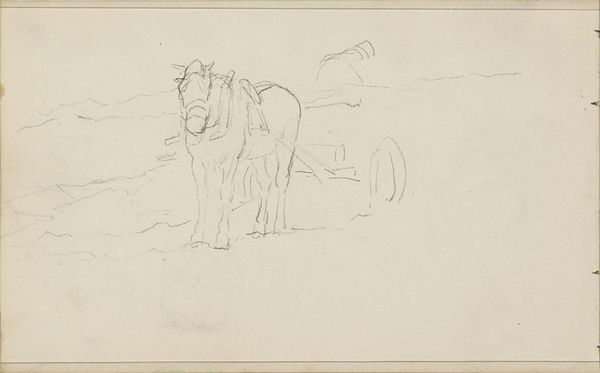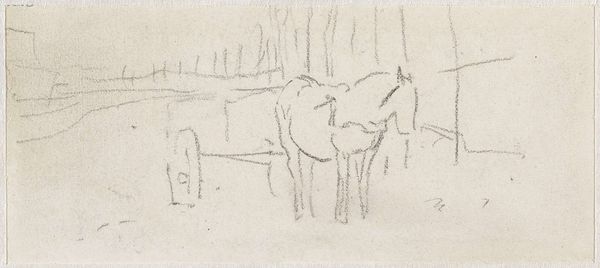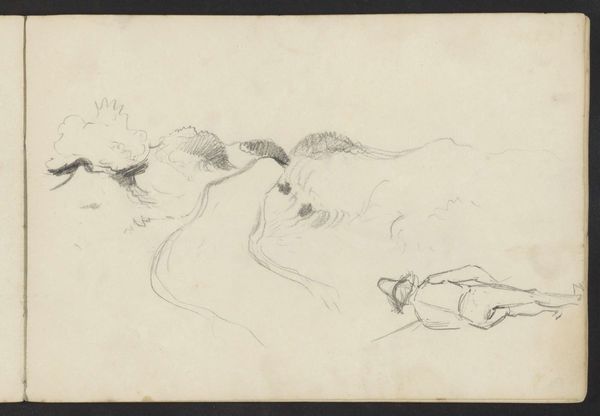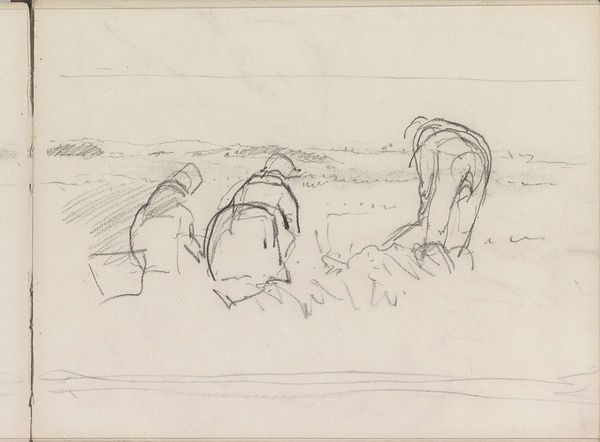
drawing, pencil
#
portrait
#
drawing
#
impressionism
#
pencil sketch
#
landscape
#
pencil
#
pencil work
#
realism
Copyright: Rijks Museum: Open Domain
Editor: Here we have "Cow in a Meadow" by Anton Mauve, created sometime between 1848 and 1888, rendered in pencil. There’s a real rawness to it, a sense of immediacy in the sketching. What strikes me most is the apparent simplicity of the image. What can we glean from it? Curator: Let's think about pencil as a medium. It’s readily available, relatively inexpensive, and easily transported. What does that say about Mauve’s access to materials and his relationship to the subject matter? Is he setting out to produce a finished object for the market, or is he doing something else? Editor: I guess it suggests something less formal, perhaps sketches done on the go, recording what he saw. Not a commissioned piece, more like personal studies. Curator: Exactly. And consider the social context. During the mid-to-late 19th century, there’s increasing urbanization. Artists were exploring the representation of rural life. So how does this pencil sketch relate to a potential idealization, or even a critique, of the agrarian economy of that era? What are the connotations of showing this kind of labor? Editor: I hadn't considered that. Perhaps showing the animal itself, rather than a romanticized farming scene, shifts the focus. It makes it about labor and what the cow itself gives materially. Curator: Precisely. Mauve, through his choice of subject and medium, might be prompting a closer consideration of those fundamental material relations between humans, animals, and land. It encourages us to see beyond idealized notions of landscape painting. Editor: I'm beginning to appreciate the deliberate use of a common material to depict everyday life and labor. It reframes my understanding of landscape art. Curator: And hopefully helps us consider the value – material, cultural, social – that we ascribe to both art and labor.
Comments
No comments
Be the first to comment and join the conversation on the ultimate creative platform.


